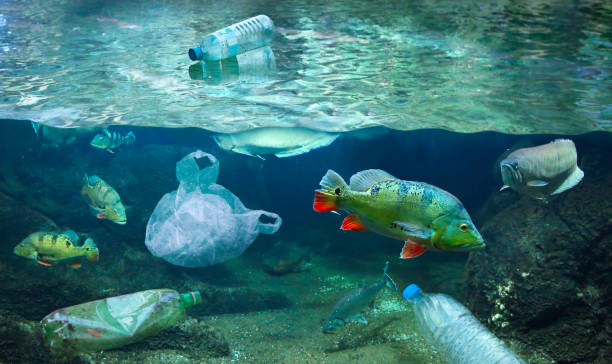There is nothing more relaxing than lounging near the ocean, listening to the waves lap against the sand, and watching seagulls soar overhead. You can find peace, tranquility, and beauty in the ocean. Sadly, it also contains waste, especially plastics.
As the world progresses, we must think about reducing plastic waste in oceans because the poisonous effects of plastic are destroying our oceans and their wildlife.
There are various examples, from the harbor seal pup that died in Scotland with its intestines smelling of plastic waste to the gray whale that passed away after being stranded near Seattle with numerous plastic bags and other trash.
Reducing Plastic Waste in Oceans: The Concern with Plastics
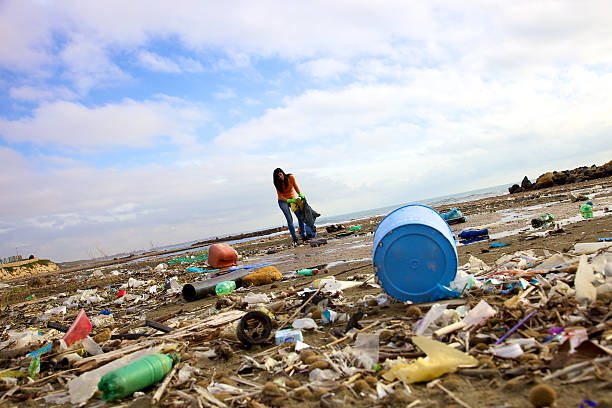
The problem with plastic is that it is nonbiodegradable, so it lasts a lot longer than other types of trash (for thousands of years). There’s more to it than people dumping their trash overboard. About 80 percent of sea litter comes from the land – either in the form of sand or gravel – which is carried by storm drains and sewer overflows to rivers during heavy rains.
Marine mammals, fish, seabirds, and turtles can suffocate, starve, or drown from plastic debris. This threat also affects humans; some plastics decompose much more quickly, and these particles end up in seafood as they break down.
Reducing plastic waste in oceans should be our main focus as we look for ways to effectively keep plastic out of our waste stream as much as possible to protect our waterways. The promising news is, you can make a big difference in several small ways.
Causes of Plastic Pollution in our Oceans
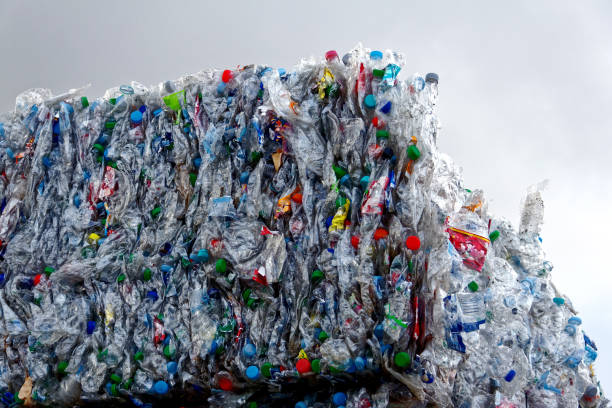
Before we get solutions for reducing plastic waste in oceans, we must understand where most of the plastics come from.
Commercialization of plastic began in the 1950s, and it has been a real success ever since. In recent years, its global production has grown exponentially. Because of its remarkable properties, it is popular: it is easy to shape, it is inexpensive, and it is mechanically durable. In general, plastic is used everywhere because it is the ideal packaging material.
So, where does plastic pollution come from?
In most cases, negligence is to blame. The majority of plastic in the ocean comes from land; estimates show that land-based litter constitutes 80% of marine litter. In addition to polluting beaches, shorelines, and estuaries, a lot of plastic ends up in landfills.
Household wastes are primarily responsible for this pollution because they are not properly recycled, disposed of in landfills, or left in the natural environment. Winds carry this waste, rain pushes it into streams, sewers, rivers, and eventually into the ocean. Floods and other natural disasters also contribute to plastic pollution in the ocean.
The Importance of Removing Plastic Waste in Oceans
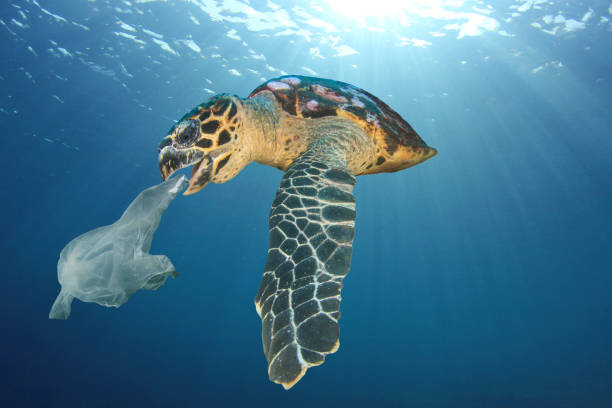
Our dependence on plastic and its versatility has led to an increase in plastic pollution. Our oceans are most affected by this. Wind, water streams, and our sewage systems end up dumping plastic into the ocean every day.
A dirty beach or coast not only reduces tourism to our island nation, but it has a long-lasting impact on the environment as well. Sea and coast pollution from plastic poses major health risks to local wildlife and, in turn, poses a threat to human health as well.
Different types of plastic pollution exist, including:
- Waste accumulation
- Non-biodegradable fishing nets and fragments of plastics trap wildlife and waste in the ocean.
- Animals die from ingesting plastic waste
- Cosmetics and body care products introduce microplastics and microbeads
Reducing plastic waste in oceans: Facts about Plastic Pollution
- According to the World Economic Forum, our oceans contain 75 to 199 million tons of plastic. Every year, humans dump 10 million tons of plastic waste into the sea as a result of recycling only nine percent of plastic waste.
- According to research, plastic is expected to outweigh all fish by 2050.
- It is estimated that between 8 and 10 million metric tons of plastic end up in the ocean each year. Plastic waste accounts for 80% of all marine pollution.
- More plastic products have been produced in the last ten years than in the previous century.
- Oceans contain 50-75 trillion plastics and microplastics at present.
- There are two ways plastic breaks down – it either floats around and forms garbage patches or it breaks down into microplastic particles.
- Nearly all of the plastic that humans have ever produced is still in existence, according to the EPA (Environmental Protection Agency).
- In general, plastic degrades between 500 and 1000 years. However, it does not fully degrade, becoming microplastics instead.
Reducing Plastic Waste in Oceans: 10 Effective Solutions
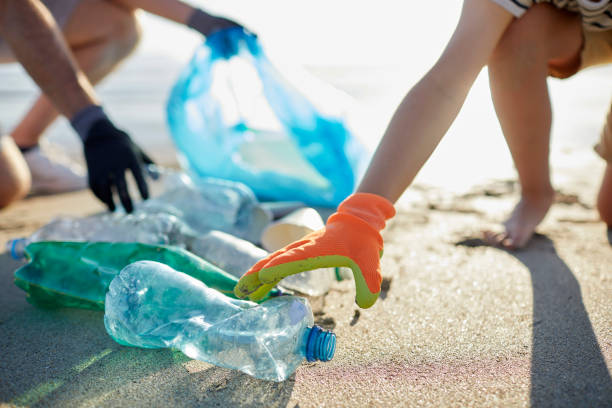
There is no single solution to effectively reducing plastic waste in oceans. Consequently, a fundamental and systemic change is needed, namely the ban on single-use plastics, the construction of more recycling infrastructure, and the development of products designed for recycling or repair.
We will examine each step in detail here.
1. Increased recycling rates
We dispose of waste incorrectly, which is a major cause of plastic in our oceans. Recycling plastic materials allows us to repurpose them into new products. Then they will not end up in landfills or polluting our waterways. Our oceans will receive a great deal less plastic waste if recycling rates are increased.
It is important that you segregate waste correctly, and you understand what each of our waste bins signifies to ensure a zero-waste planet. Recycling programs can be implemented for different waste streams by waste management companies.
2. Avoid disposable plastics
In our daily lives, we throw away most of the plastic items after just one use: disposable cutlery, grocery bags, plastic wraps, straws, and coffee cup lids are just a few examples.
Replace these products with reusable ones based on how often you use them is a good step towards reducing plastic waste in oceans. Having your bags at the store, silverware at work, or a travel mug at Starbucks becomes a habit after just a few occasions.
3. Endorse legislation to reduce plastic waste
Changes in individual behavior are important, but they alone are not sufficient for reducing plastic waste in oceans. Legislation should also reduce plastic production, improve waste management, and hold plastic producers accountable.
You can help reduce plastic pollution locally, nationally, and internationally in a variety of ways, including supporting the right legislation that fights for the reduction of plastic waste and the use of eco-friendly packaging.
4. Beware of microplastics
Microplastics are perhaps the most harmful form of ocean pollution not just for our local marine life but also for humans. Microplastics are found in the ocean, and fish of all sizes ingest them. When we consume fish, we can consume microplastics as well.
Regulations are required to reduce microplastic pollution, which is caused by the breakdown of larger plastics. Our actions can help in reducing plastic waste in oceans by avoiding products that intentionally contain microplastics, such as glitter and wet wipes.
5. Encourage others
Let other people know how plastic waste impacts the environment, particularly the water bodies. Social media or family and friends can be used for this purpose.
It is important that we spread the word and create an effort as a whole by encouraging others to make small changes. We can be successful in our efforts to reduce plastic waste in oceans as a result of this knock-on effect, opening up new solutions to the problem.
6. The 3 Rs
- Reduce
We need to reduce our plastic usage to reduce plastic pollution efficiently. This means avoiding plastic whenever possible and only using plastic when strictly necessary, by changing our everyday behaviors.
- Reuse
When poorly managed, plastic can cause pollution, but it also has lots of advantages, like its resistance to tearing. It is therefore possible to reuse or repurpose many plastic items. It is important to consider whether plastic items can be repurposed before throwing them out.
- Recycle
You should always recycle single-use (and other) plastics that can be recycled, no matter what. Plastics are recycled worldwide at a rate of just 9% at present. Keeping plastic out of the ocean and reducing “new” plastic in circulation is one-way recycling helps keep plastic out of the ocean.
7. Make bulk purchases
Bulk buying usually refers to dry goods such as cereal, legumes, grains, nuts, spices, and dried fruit in bulk. Alternatively, dried foods can be packed in paper bags or containers. That way, you save money on single-use plastic bags and help the environment at the same time.
Bulk products are available in many other categories. Bulk purchases of paper towels, toilet paper, and cleaning supplies are good bets as long as you have the space to store them. Any other item you regularly use that does not have a short shelf-life should be included as well.
8. Pressurize manufacturers
Corporations have a much bigger footprint than individuals, but we can still make a difference in reducing plastic waste in oceans through our habits. Let a company know if you think its packaging could be improved and made more eco-friendly and sustainable. Send a tweet, write a letter, or financially punish them by giving your money to a more sustainable company.
9. Always carry a reusable coffee cup
Would you like a cup of coffee every morning? You can make a huge difference in reducing plastic waste in oceans by keeping a travel cup on you. Instead of throwing this away after each use, it can be reused many times over.
Getting rid of disposable cups and plastic bottles is one of the best things you can do for the environment. There are one million plastic bottles purchased every minute around the world according to a report, and this number is expected to increase by another 20% if we don’t take action. More ocean pollution can be prevented by using reusable bottles and mugs.
10. Organize (or participate in!) a cleanup
In your local community, you can help remove litter from the waterways by volunteering to pick up litter, preventing plastics from entering the ocean. If you want to do it with your family and friends on the weekend, you can join many organizations. The little things add up!
Make others aware of plastic pollution issues by staying informed. Organize a viewing party for one of the many documentaries on plastic pollution and tell your friends and family how they can help in cleanup.
Conclusion
Plastic pollution in the ocean is a growing problem, and these ten ideas only scratch the surface. Regardless of how small our efforts are, we all must do something to reduce plastic waste in oceans.
We can mitigate plastic pollution and make our environment cleaner and healthier for future generations with a comprehensive and collaborative approach to reducing plastic waste in oceans.

